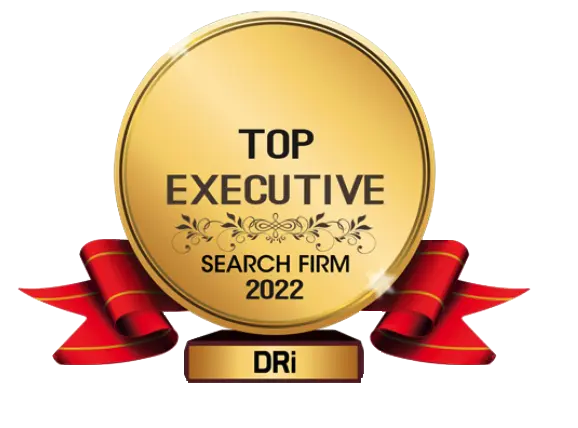object(WP_Post)#4119 (24) {
["ID"]=>
int(6718)
["post_author"]=>
string(2) "10"
["post_date"]=>
string(19) "2022-08-31 18:19:41"
["post_date_gmt"]=>
string(19) "2022-08-31 18:19:41"
["post_content"]=>
string(11923) "
Why Organizations Today Need Diversity, Equity and Inclusion
Diversity, equity and inclusion are more than just buzzwords. They’re part of a more meaningful approach to talent management that is rooted in social awareness and responsibility. According to Forbes, today’s organizations should understand that diversity is more than just ticking a box or meeting a target, it is the norm, and it will stay that way.
Diversity and inclusion provide significant benefits to any workplace. This article will take a deep dive into diversity and inclusion, their benefits, and a few key pointers for any organization looking to become more diverse and inclusive in the future.
Diversity Explained
What exactly is diversity in the workplace? While it may have started with only race and ethnicity, the term has evolved into a more all-encompassing concept. Now, if organizations want to be diverse, it means looking to build teams that include a range of:
- Race
- Ethnicity
- Age
- Gender identity
- Sexual orientation
- Physical abilities
- Mental abilities
- Religious beliefs
- Education
- Socioeconomic background
- Language spoken
- Geographical orientation
- Culture
- And more!
Diversity and Inclusion
Diversity and inclusion are sometimes used interchangeably – but that is incorrect. In creating diverse workplaces, inclusion is equally important, but it’s not just about bringing in diverse groups of people.
Inclusion is best described as the feeling of belongingness. Without the right support and initiatives from the organization, people with different backgrounds may not be able to fit in well. This is why diversity and inclusion should always go hand-in-hand.
In the workplace, inclusion can be achieved by intentionally creating a culture of understanding and respect where team members are encouraged to bring their full, true selves to work every day - put another way, a culture of psychological safety, which is a hallmark for culturepreneurial organizations!. This mindset should also be reflected in the organization’s values, programs, and strategies.
What Diversity, Equity and Inclusion Bring to the Table
Creating Unique Solutions
A workforce made up of people with different backgrounds, experiences, skills, perspectives, and insights can find diverse or unique solutions and build creative strategies. Employees can draw from their differences to cover a wider scope of knowledge. From here, they can generate novel and original ways of tackling problems.
When done right, an organization can leverage its diversity, help meld the differences together for a singular goal, and spark innovative ideas that together can help drive performance and success for individuals, teams and the company as a whole. According to Harvard Business Review, the leadership in an organization needs to promote a culture of sharing knowledge to make the most of the creativity diversity brings.
Making Smart Decisions
One study by Cloverpop highlighted the role of diversity and inclusion in improving an organization’s capability for making smarter decisions. According to their data, more inclusive workplaces are inclined to make more sensible decisions up to 87 percent of the time.
Additionally, diversity helps these organizations drive their decision-making up to twice as fast, with only half the time spent on deliberation. The overall results of these decisions have also seen an improvement of 60 percent.
Another study by Gartner found that 75 percent of organizations with a diverse and inclusive decision-making body are bound to exceed their financial targets.
This performance boost is driven by diversity’s ability to widen the knowledge base of an organization.
Boosting Morale
Truly diverse and inclusive workplaces encourage their employees to be the best they can be. Employees feel more at ease and satisfied when they know they are in an environment that respects them and where their efforts are recognized and celebrated. Inclusivity creates safe spaces for everyone to share their issues and suggestions, which can then be dealt with or acted on appropriately.
A workforce with excellent morale brings with it a whole host of other benefits, including:
- Engagement – When employees are happy, they are more engaged with their work and workplace. They respond well to and even support new initiatives. They participate in engagement activities and find ways to make their jobs better. A survey by Deloitte found that 83 percent of millennials report higher engagement numbers in inclusive organizations.
- Retention – A workforce that has high morale and is engaged will have lower turnover rates. Employees want to stay in organizations where they know their voices and contributions are valued. A report by The Kapor Center found that culture drives turnover, and affects the retention of underrepresented groups.
- Productivity – Morale has always been linked to productivity. Employees with higher morale show up more, perform better, and actively find ways to improve their processes. This increase in productivity directly translates to improvements in an organization’s bottom line.
Diversity and Inclusion as Part of Your Employee Value Proposition
People want to work for organizations that take an active approach to diversity and inclusion. And by being genuine about these qualities as part of their culture and employee value proposition (EVP), organizations will reap this benefit in their recruitment and retention efforts. Having diversity and inclusion as genuine tent poles for their EVP can uplift an organization’s employer brand, which, in turn, can support:
- Recruitment – It’s not all about a better paycheck or important-sounding titles now; according to a survey by Indeed, 55 percent of jobseekers consider it extremely important that the company they work for prioritizes diversity and inclusion.
- Client conversions – As part of their own endeavors to improve diversity and inclusion within their own operations, many consumers have now become conscious of whether the companies they do business with are making an effort to embrace diversity and inclusion themselves. It can be a significant factor in influencing client conversions.
In fact, a Nielsen report, based on data gathered from 30,000 consumers across 60 countries, found that 66 percent of consumers are willing to pay more money for goods and services from companies that demonstrate social commitment.
Diversity and Inclusion are a Must-Haves in the Workplace
In conclusion, by promoting diverse workplaces, organizations can find more creative solutions, make smarter decisions, boost employee morale, and improve their brand reputation.
Organizations can make the most of their diverse talent pool by creating a culture of inclusion. Initiatives and values that promote understanding, respect, and openness - psychological safety - are the building blocks of such a culture.
If you want to learn more about how to improve your workplace, contact our team.
"
["post_title"]=>
string(33) "Must-Haves in Today’s Workplace"
["post_excerpt"]=>
string(0) ""
["post_status"]=>
string(7) "publish"
["comment_status"]=>
string(4) "open"
["ping_status"]=>
string(4) "open"
["post_password"]=>
string(0) ""
["post_name"]=>
string(30) "must-haves-in-todays-workplace"
["to_ping"]=>
string(0) ""
["pinged"]=>
string(0) ""
["post_modified"]=>
string(19) "2022-12-07 20:42:48"
["post_modified_gmt"]=>
string(19) "2022-12-07 20:42:48"
["post_content_filtered"]=>
string(0) ""
["post_parent"]=>
int(0)
["guid"]=>
string(66) "http://purring-discovery.flywheelsites.com/driwaterstonehc/?p=6718"
["menu_order"]=>
int(0)
["post_type"]=>
string(4) "post"
["post_mime_type"]=>
string(0) ""
["comment_count"]=>
string(1) "0"
["filter"]=>
string(3) "raw"
}




